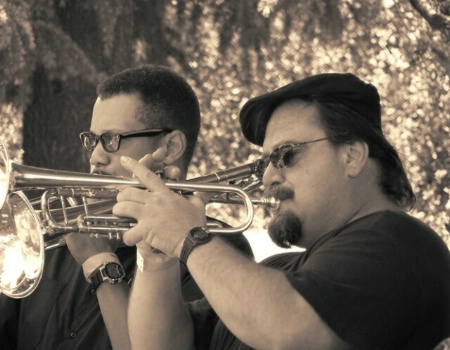
Tom G. Smith |
|
Color vs. B&W/Sepia Settings on Digital Camera
|
|
|
|

Brassy Conversion
This is using the sepia filters in psp7.
Tom G. Smith
|
|
|
|

Brassy Unique
This is using the sepia feature on my camera
Tom G. Smith
|
|
|
|
I read that you should take all pictures as color, that you can change the image to b&w or sepia later on the computer. I realize this is true, however I don't think the quality is near as good as what can be obtained by using the camera's features. How does everyone else feel about this?
August 13, 2002
|
|
|
Tom Darmody |
|
[quote]I read that you should take all pictures as color, that you can change the image to b&w or sepia later on the computer.[/quote] I 100% disagree with that statement. changing a color photo from color to grayscale isn't the same as a black and white photograph, it's actually a color photo with no color. Black and white film has certain characteristics (most are inherant to particular films) that are very difficult to reproduce digitaly. Even the contrast and tone is different.
August 13, 2002
|
|
|
Tom G. Smith |
|
Exactly Tom D., though I use strictly digital, I too believe that the features of the camera produce a better quality b&w or sepia. I understand that you might miss a shot in color while changing the features. But in the long run I think the final picture is the key.
August 13, 2002
|
|
|
John A. Lind |
|
Tom,
Pick the method the you like best. One man's ceiling is another man's floor and with effects such as sepia toning evaluation is completely subjective. Sepia toning B/W (as with all B/W print toning such as platinum, gold, selenium, etc.) is a special set of additional processing steps in developing B/W prints. As such the results vary by the exact chemistry, time and temperatures used, as well as the print paper. There's no exacting standard for it. It's completely dependent on the photographer's vision for what the print should look like when finished.-- John
August 25, 2002
|
|
|
Greg P. Lee |
|
I agree John
At the end of the day it's what ever method suites you best. To say there is one way to take a picture is very constricting. I love to take the same shot in many different ways and then play with them on the computer. Seldom the shot I think will be the best ever is. A couple of my favorite shots are even accidents. If you have to follow rules and know what the outcome will be; why bother?Greg
September 05, 2002
|
|
|
Michaelle Walcutt |
|
From a purely technical standpoint... you will optain more "information" by shooting in color, then converting to B&W post processing for digital prints. This additional information can help with the final print by easing digital touchups and level changes. When you convert the picture, either use convert to Greyscale or save the lightness channel in Lab color. I do not recommend using the Desaturation feature as it is unpredicatable and leaves quite a bit of "noise" in the final result. Additionally, by converting in post-processing, you do get the added benefit of "shooting from the hip" without having to worry about settings. I shoot in both film and in digital, and for the most part, have learned how to "copy" the film effect in digital post processing for most of my favorite films (Tmax 100&400, TriX, etc...), but it takes work and practice... the best thing I can say is just have fun!
December 16, 2002
|
|
|
Ms. Shan Canfield |
|
I have to agree with the examples shown, the in-camera sepia looks much better....but this exact look can "indeed" be achieved in Photoshop. I would have to say, you just chose the "wrong" method of post production of a sepia technique for Photoshop. But the key words here are "post production"---if you can achieve a desirable result in camera, saving yourself TIME, than that's the way to go! Visit my Photoshop Mama's Home for Photoshopaholics at:
http://www.shanzcan.com
September 08, 2003
|
|
|
|
Log in to respond or ask your own question.
|